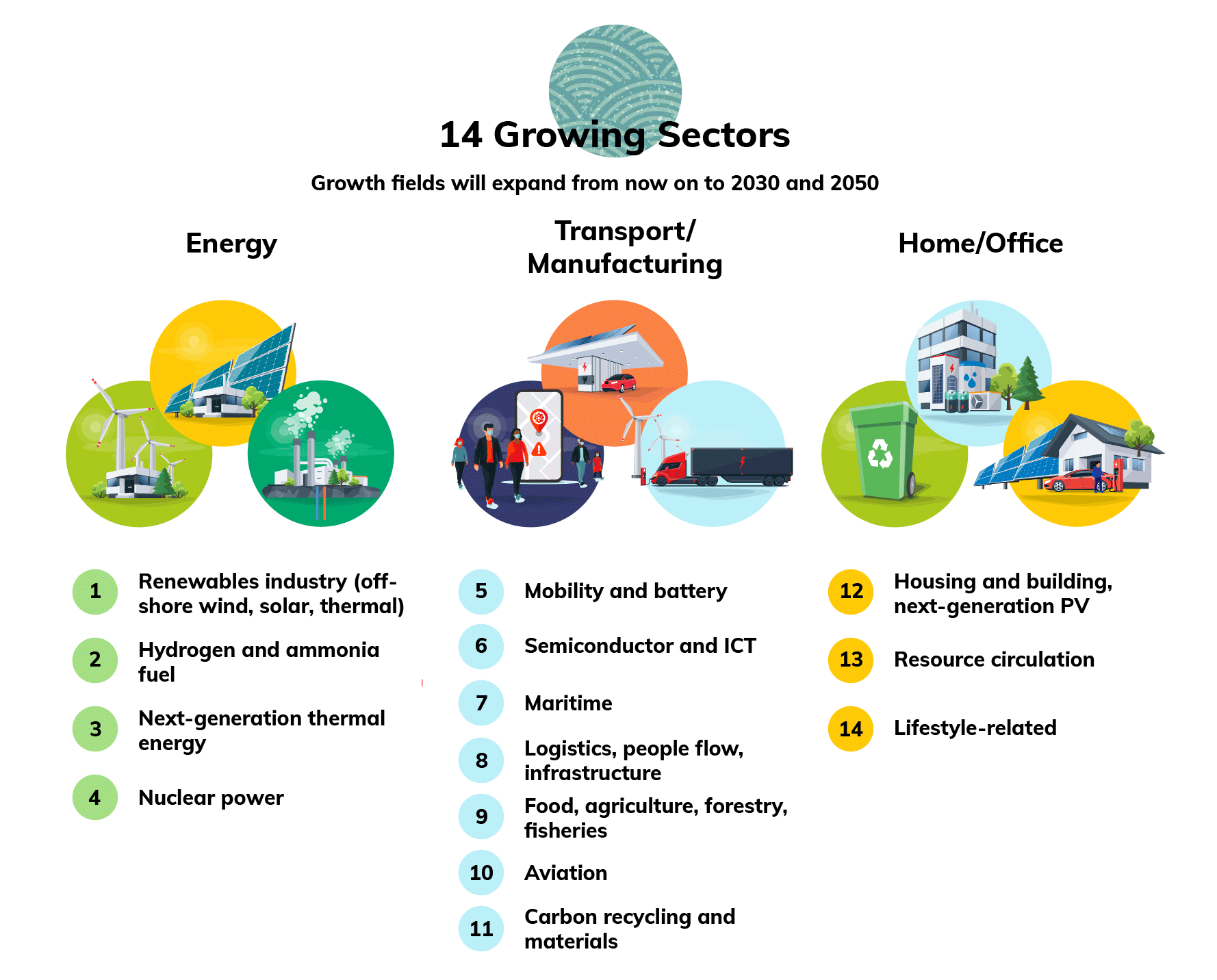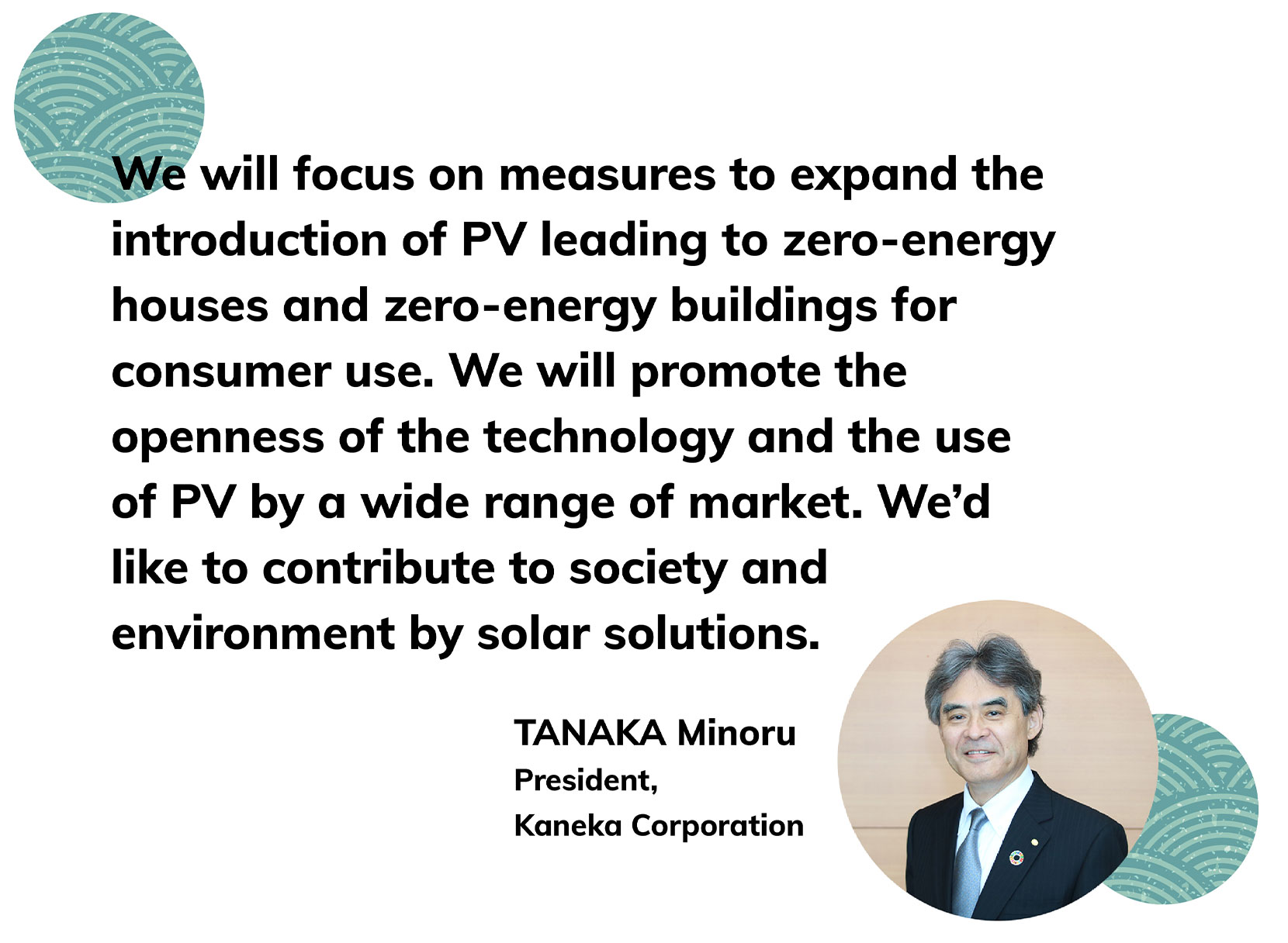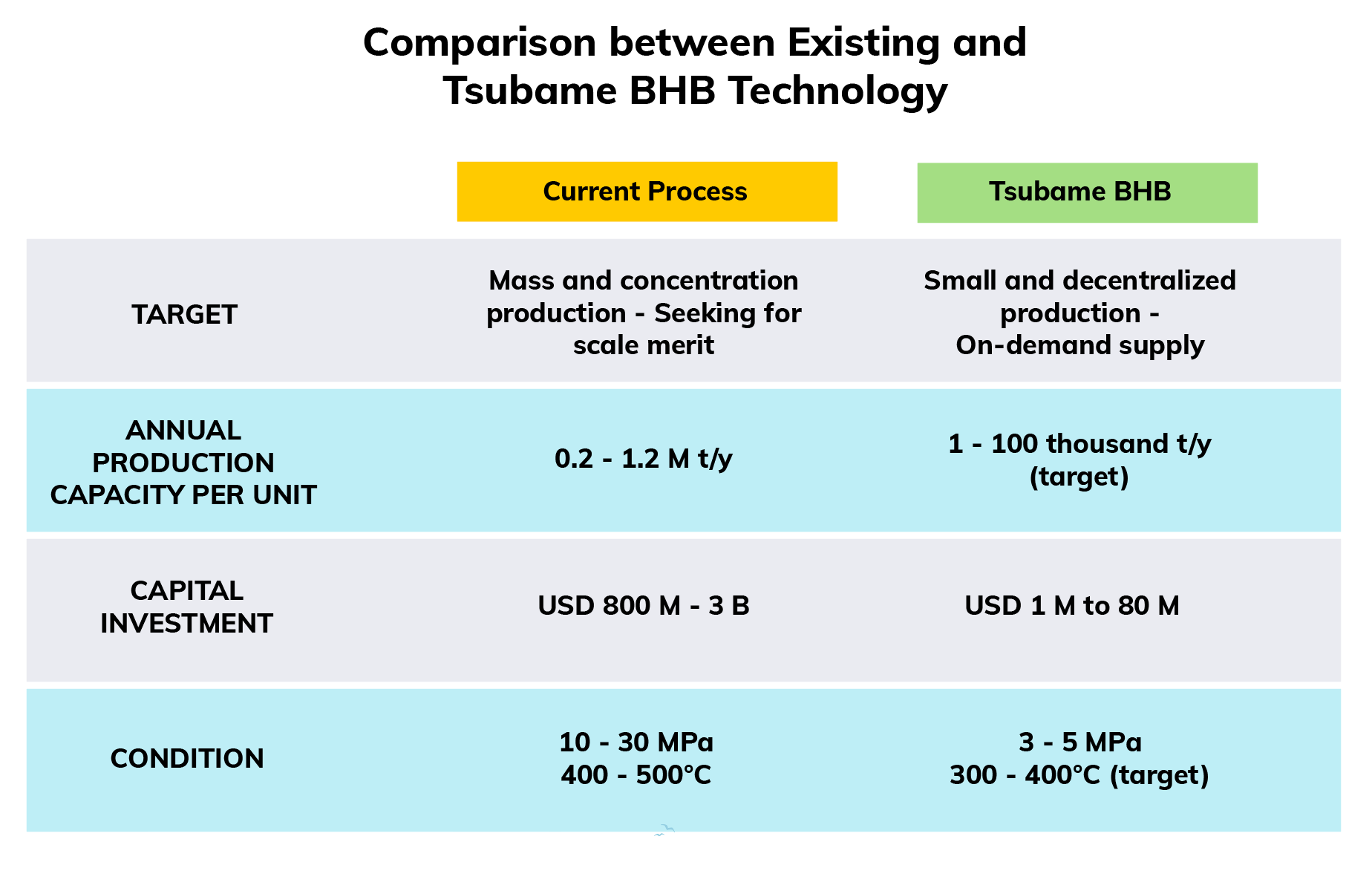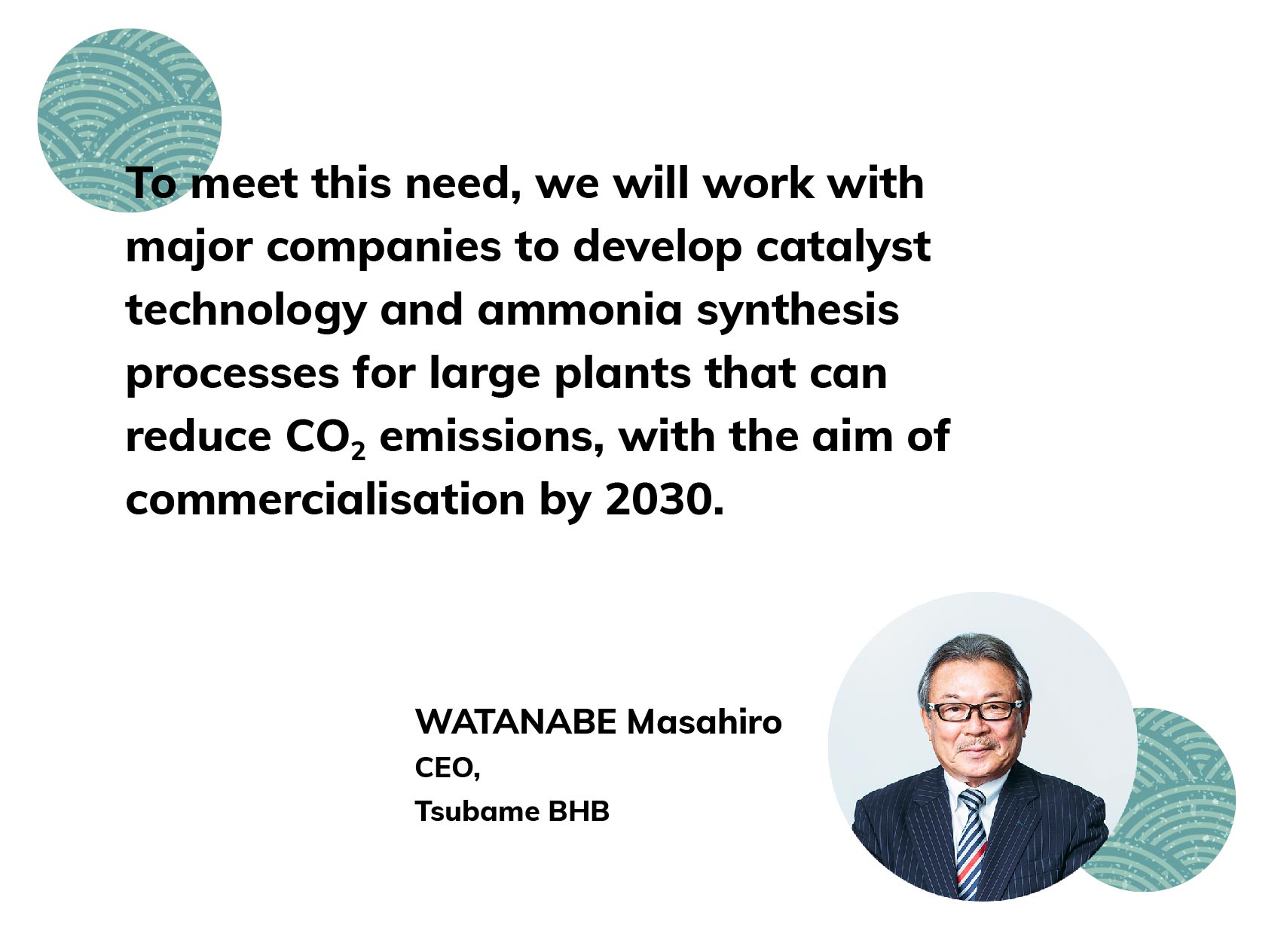Charting the Path to Net Zero with Japanese Innovations
Countries around the world are doubling down on net zero. In April, U.S. President Joe Biden hosted a two-day virtual climate summit,[1] and later this year world leaders will come together to discuss climate action at COP26. In Japan, Suga government set ambitious emissions reduction targets shortly after taking office. Now it is committed to answering a critical question: How can Japan achieve its goals and contribute on an international level?
The Japanese government formulated its plan to achieve carbon neutrality by 2050 in December 2020 and updated the plan in June 2021. And earlier this year, Prime Minister Suga set a goal to reducing emissions by 46% from their 2013 levels by 2030, while also noting that Japan will continue strenuous efforts in its challenge to meet the lofty goal of cutting its emission by 50%. The Green Growth Strategy will advance technology and foster greater public-private partnerships.
The Green Growth Strategy aims to create a positive cycle of economic growth and environmental protection. It sets goals in 14 fields with high growth potential, identifies current challenges and outlines action plans to solve them including budgets, taxes and regulatory reforms. Preliminary calculations suggest the strategy could spur annual growth of JPY140 trillion ($1.26 billion) by 2030 and JPY290 trillion ($2.6 billion) by 2050.[2]
Road to Net Zero

The Green Growth Strategy outlines a comprehensive approach to achieve carbon neutrality by 2050. It positions decarbonizing the electricity sector as a major premise. For industry, transport, and consumer sectors, electrification will be promoted. For non-electricity demand, decarbonized fuels such as hydrogen and the capture and utilization of CO2 from fossil fuels will also be utilized. The electric power sector will be decarbonized by maximizing the introduction of renewable energy and the utilization of nuclear power, as well as pursuing hydrogen, ammonia, and CCUS as options.
In addition, Green and digital are inseparable. To support an electrified society, the Green Growth Strategy also underpins the robust digital infrastructure required. Already, Japan has taken giant steps in this direction.

Installation of solar power, for instance, is expanding. It accounted for 8.2% electricity generation in 2020.[3] And the country added 8.7 gigawatts of solar capacity in 2020—the most in five years—with installations surpassing the government’s 2030 target on the back of a generous subsidy.[4]
Next-generation technologies will be vital to further accelerate the adoption of solar power in Japan. Those include breakthrough small-scale photovoltaics that promise greater efficiency and could pave the pathway to self-sufficient buildings in urban areas. PV solutions that can be integrated into building materials are at the heart of the solar revolution. The country will continue to expand the potential of solar power generation through the development of next-generation solar cell technologies.
Meanwhile, the Green Growth Strategy calls for Japan to demonstrate 20% ammonia co-firing in actual coal-fired thermal power plants from 2021 and increase its use from the latter half of this decade.[5] Ammonia does not emit CO2 during combustion and is one of the effective fuels for combating global warming. If 20% co-firing is implemented at all coal-fired thermal power plants run by Japanese major power companies, it will reduce CO2 emissions from the domestic electric power sector by 10%.[6]
Jera—Japan’s largest electricity generator and the world’s largest LNG and seaborne thermal coal buyer—is ahead of the curve. Last year, Jera unveiled a roadmap to achieve zero CO2 emissions by 2050. The roadmap relies primarily on ammonia and hydrogen. By the first half of the 2030s, it plans to achieve 20% ammonia co-firing at all its coal plants, shifting to 100% ammonia by 2050.[7] As Japan’s heavy industry sectors plan to decarbonize, carbon-free fuels including hydrogen and ammonia will play a crucial role. Technologies that make them more accessible are therefore critical to achieving net zero.
Solar Innovation Fit for Urban Areas
Japanese heavyweight Kaneka Corporation is at the forefront of the next-generation solar revolution. Kaneka PV, for example, is integrated to the roof of Japan National Stadium. Through its partnership with the major construction company Taisei Corporation, it developed “T-Green Multi Solar,” which generates electricity through photovoltaic laminates integrated into the walls and window surfaces of buildings.
“’T-Green Multi Solar’ will greatly contribute to the expansion of zero-energy buildings,” says TANAKA Minoru, President of Kaneka Corporation. “We would like to make use of solar power generation as a clean energy source for securing Japan’s main power source as well as an independent power source in preparation for disasters. At the same time, we will further pursue value-added features unique to our products that meet user needs such as design and convenience of installation work.”
There are two types of T-Green Multi Solar solutions: a solid type where photovoltaic laminates are turned into vertical exterior panels (walls); and a see-through type that achieves transparency through stripe-shaped solar cells that are integrated into window glass. With these two types combined, the system can be applied to a variety of building exteriors. The system also functions as an independent emergency power source. Not only buildings, but a part of the roof of Japan National Stadium is equipped with KANEKA see-through PV, which leads to the development of T-Green Multi Solar.
_ZEB_028.jpg)

“In terms of technological differentiation, Kaneka is ahead of the curve,” TANAKA adds. “Our unique technologies such as ‘integrated construction materials’ and ‘windows and walls that generate electricity' are differentiating factors. We will continue to focus on the development of innovative technologies that other companies cannot follow.”
As an exterior material, T-Green Multi Solar offers durability, excellent workability, and can maintain long-term power generation. This system provides for the same level of durability as general exterior materials, outstanding workability due to the photovoltaic laminates being integrated into the exterior materials, and continuous power generation for over 30 years.
“Maximizing the use of boundless solar energy is the most effective approach to achieve carbon neutrality,” TANAKA says. “However, Japan is lagging behind in the introduction of solar power for consumer use, and this has become a national challenge. Expanding the use of PV for consumer use is one of the pillars of the Green Growth Strategy and it is essential to expand the use of PV in homes and buildings for zero-energy housing and zero-energy buildings.”
This technology has global implications. Cities account for around 65% of global energy use and 70% of man-made carbon emissions.[8] Given that the share of the world’s population living in urban areas will increase to 68% by 2050 from 55% today,[9] delivering renewable power is important. T-Green Multi Solar could bolster the supply of renewable power in cities around the world with grid-tie and off-grid systems.

Increasing Accessibility to Ammonia
Ammonia holds great promise for carbon neutrality, but it is still produced using the Haber-Bosch synthesis method, which was developed over 100 years ago. There are currently several problems in the ammonia industry including high temperatures and high pressure reaction conditions, excessive transport and storage costs and large CO2 emissions. Availability is another challenge. According to the Green Growth Strategy, if 20% co-firing with ammonia were implemented at every thermal power plant owned by Japan’s major electric power companies, 20 million tons of ammonia would be required—comparable to the current world trade volume. Thus, the formation of a fuel ammonia market is necessary to meet that demand.

A start-up called Tsubame BHB has the potential to solve these challenges. Tsubame BHB is on course to commercialize the world’s first on-site ammonia synthesis system using their electride catalyst technology, potentially revolutionizing the industrial power mix. The start-up is researching electride catalysts that enable ammonia synthesis at low temperatures, low pressures and on a small scale, making it possible to provide it efficiently, at low cost and without the need for transportation.

“Ammonia has the potential to make a significant contribution to decarbonization as it emits no CO2 when burnt,” says WATANABE Masahiro, CEO of Tsubame BHB. “We believe that the demand for ammonia will increase significantly in the future and that there will be a need for technology to produce ammonia more efficiently. To meet this need, we will work with major companies to develop catalyst technology and ammonia synthesis processes for large plants that can reduce CO2 emissions, with the aim of commercialisation by 2030.”
Pilot plant tests have shown positive results, and research is underway with the aim of bringing the first unit on stream in 2023. The commercial unit of Tsubame BHB’s main business expects to receive an order for a small scale onsite ammonia production system by the end of 2021. Following the first order, the company hopes to capture more markets.
“We believe that ammonia is an essential substance for environmental and food issues,” WATANABE adds. “We hope that our business will make ammonia more accessible and easier to use. Our goal is to help achieve a sustainable society by making ammonia available everywhere in the world.”

Making Net Zero Possible With Japanese Innovations
In July, the Ministry of Economy, Trade and Industry (METI) and Japan External Trade Organization (JETRO) will host the NET ZERO Leaders Summit to showcase Japan's efforts toward green investment and realizing carbon neutrality by 2050.
At this digital event, world leaders will discuss cutting-edge initiatives and future visions under the theme of “Realizing Net Zero.” The main program consists of keynote speeches by representatives of Japan’s government, key opinion leaders and CEOs of various corporations from around the world that lead the green industry, as well as panel discussions on future trends and issues surrounding the shift to carbon neutrality.
The summit will also introduce exhibits by Japanese start-ups and corporations including Tsubame BHB, Kaneka Corporation and many others whose advanced green technology and research hold the potential to advance the global drive to net zero.
Delivered in both English and Japanese, and made available to participants around the world online, the NET ZERO Leaders Summit
is another sign that Japan is leading the way in advanced technology, public-private partnerships and international cooperation on the most important global challenge today.
------------
[2] METI – Green Growth Strategy Through Achieving Carbon Neutrality in 2050
[3] BNEF – 1H 2021 Japan Market Outlook
[4] BNEF – Japan and Korea: May 2021 in Short
[5] METI – Green Growth Strategy Through Achieving Carbon Neutrality in 2050
[6] METI – Green Growth Strategy Through Achieving Carbon Neutrality in 2050
[7] BNEF – World’s Largest LNG Buyer Targets Zero Carbon by 2050
